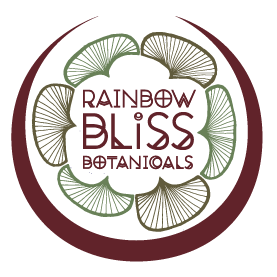After years of digestive distress due to eating grains & gluten, hot/dry foods, living in the desert, and a lack of awareness for my own intestinal anatomy and diet triggers, I discovered colon hydro-therapy....and have fallen deeply in love with this powerful healing modality. This work provided to me by a dear friend, Mariana, has changed my life in terms of how I see my overall health and where trauma and disease reside within my temple.
Through studying enema therapy as a part of learning Ayurvedic Bastis, a vital element of Panchakarma, I have administered medicines in new ways and experienced such beautiful, soothing therapy! This topic may be strange to some who are new to the realm of alternative & traditional healing practices, regardless, I would like to share my new-found love for Bastis as well as TCM purgatives. As a background for what purgatives are (which are different than enemas), here is a note on purgative therapy I composed for an assignment with East West Planetary Herb School. Stay tuned for bowel tonic recipes and enema therapy suggestions.
The three modes of purgative therapy include: Attacking, Lubricating, and Cathartic applications.
The Lubricating demulcents are what I have the most experience with and overall, they attract water in the colon, thus re-hydrating the dry walls of the colon. Due to their demulcent properties, like flax, they create a slippery environment for waste to move down and out through. This therapy is ideal for de-hydrated bowels and dry constipation due to a hot, dry environment, but also due to diet and lack of water intake. Demulcent herbs are mucilaginous by nature and because they absorb water, the matter swells over ten times its size than when dry. This seems like it would create a gentle, yet forceful & effective action in the colon to work with the combination of gravity, volume and moisture to evacuate waste. Plenty of water must be consumed while using these herbs as purgatives or else an unhelpful paste will form in the stomach and colon and potentially cause more discomfort. These are effective towards relieving chronic constipation, but are not recommended for people with damp conditions. Lubricating, moist, oily laxatives include psyllium, flax seeds, marijuana seeds, slippery elm, triphala and castor oil. From a diagnostic perspective, when chronic constipation is present, look deeper to the root of potential underlying blood or yin deficiency.
Cathartic herbal purgatives are strong-acting diuretics and laxatives that treat stagnation of the bowels…more specifically, stagnation of the fluids in the abdomen. These herbs are more harsh than lubricating herbs and purge fecal matter as well as water from the body in a forceful and usually quick way. Generally, Western medicine views cathartic herbs like euphorbiae, mandrake, poke root and croton as toxic, although they can be successfully applied to people suffering from water and fecal immobility in the abdomen. Cathartic and attacking herbal therapy is contra-indicated with cold, weak conditions and are not suitable for long-term use.
Another downward draining purgative mode is “Attacking.” These quickly dispel toxins in the body downward and out. These are appropriate when the abdomen is uncomfortably full, for acute constipation, and for severe constipation that causes toxic build-up (Heat), and possibly fevers. Attacking purgatives have a bitter taste, which stimulates bile production and then peristaltic action soon after. In Leslie’s book, Healing with the Herbs of Life, she states thats the cold energy herbs of rhubarb, aloe, cascara sagrada, and walnut bark should be paired with a mildly warm carminative herbs that warm the Interior like fennel or ginger, to prevent griping pains.
For more information, check out Chapter 12: Eight Methods of Herbal Treatment in Chinese Traditional Herbal Medicine Volume 1: Diagnosis and Treatment by Michael Tierra L.Ac, OMD, A.H.G and Lesley Tierra L.Ac, A.H.G.
